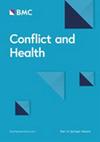难民融入约旦卫生系统的政治优先事项的出现和回归:利用金登多重流模型进行的分析
IF 3.4
2区 医学
Q2 PUBLIC, ENVIRONMENTAL & OCCUPATIONAL HEALTH
引用次数: 0
摘要
叙利亚难民长期滞留约旦,凸显了为难民提供可持续医疗服务模式的必要性。2012年,约旦政府通过了一项政策,允许叙利亚难民免费进入国家医疗系统。然而,自2012年以来,连续的政策修订限制了难民的使用权。本文试图了解最初将难民融入医疗系统提上政策议程的因素,以及这些因素后来如何影响了维持政策的承诺。本文的数据来源于对197篇同行评议和灰色文献出版物的文献综述、对约旦四家官方认可的报纸文章的媒体分析,以及33次半结构化关键信息提供者访谈。我们使用了金登的多重流模型--一种分析政策采纳情况的成熟工具--来了解难民融入卫生系统的政治优先权是如何形成的。我们发现,有几个因素有助于引起人们对这一问题的关注,即对传染病向收容社区传播的担忧、难民人口中慢性病的高发病率以及难民日益城市化和分散化的特点。在冲突之初,国民的情绪是接受难民的。政治家和政府官员很快认识到,这场危机是一个从国际人道主义社会获得物质和技术支持的机会。与此同时,将难民纳入国家卫生系统的全球压力也推动了约旦乃至整个地区的难民融入议程。自 2012 年以来,约旦对该政策进行了多次修改,这表明该国对叙利亚难民继续留在该国的看法发生了深刻变化,而且外部财政支持也有所减少,从而削弱了该政策的可持续性。本案例研究强调了政策制定的动态性质,以及政府在难民健康权方面持续承诺所面临的挑战。我们的分析对努力推动和保持难民融入国家卫生系统势头的倡导者具有重要意义。本文章由计算机程序翻译,如有差异,请以英文原文为准。
The emergence and regression of political priority for refugee integration into the Jordanian health system: an analysis using the Kingdon’s multiple streams model
The prolonged presence of Syrian refugees in Jordan has highlighted the need for sustainable health service delivery models for refugees. In 2012, the Jordanian government adopted a policy that granted Syrian refugees access, free of charge, to the national health system. However since 2012, successive policy revisions have limited refugee access. This paper seeks to understand factors that initially put refugee integration into the health system on the policy agenda, as well as how these same factors later affected commitment to sustain the policy. This paper draws on data from a document review of 197 peer-reviewed and grey literature publications, a media analysis of newspaper articles retrieved from four officially recognized newspapers in Jordan, and 33 semi-structured key informant interviews. We used Kingdon’s Multiple Streams Model – a well-established tool for analyzing policy adoption – to understand how political priority developed for integration of refugees into the health system. We find that several factors helped bring attention to the issue, namely concerns over infectious disease transmission to host communities, high rates of chronic conditions among the refugee population and the increasingly urban and dispersed nature of refugees. At the outset of the conflict, the national mood was receptive to refugees. Politicians and government officials quickly recognized the crisis as an opportunity to secure material and technical support from the international humanitarian community. At the same time, global pressures for integrating refugees into national health systems helped move the integration agenda forward in Jordan and the region more broadly. Since 2012, there were several modifications to the policy that signal profound changes in national views around the continued presence of Syrian refugees in the country, as well as reduced external financial support which has undermined the sustainability of the policy. This case study underscores the dynamic nature of policymaking and the challenge of sustaining government commitment to the right to health among refugees. Our analysis has important implications for advocates seeking to advance and maintain momentum for the integration of refugees into national health systems.
求助全文
通过发布文献求助,成功后即可免费获取论文全文。
去求助
来源期刊

Conflict and Health
Medicine-Public Health, Environmental and Occupational Health
CiteScore
6.10
自引率
5.60%
发文量
57
审稿时长
18 weeks
期刊介绍:
Conflict and Health is a highly-accessed, open access journal providing a global platform to disseminate insightful and impactful studies documenting the public health impacts and responses related to armed conflict, humanitarian crises, and forced migration.
 求助内容:
求助内容: 应助结果提醒方式:
应助结果提醒方式:


